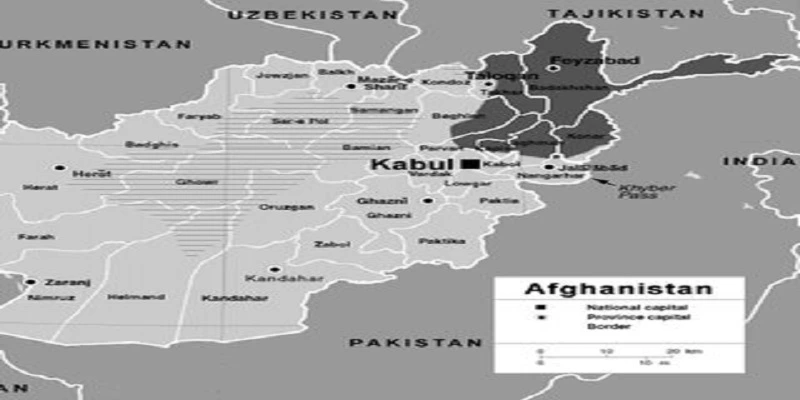Impact of Soviet Withdrawal Afghanistan's Descent into Chaos and Division
The last troops of the Soviet Union left Afghanistan in 1989. After the withdrawal from Afghanistan. Soviet troops. Afghanistan experienced a decline and disintegration due to the civil conflict, "the Afghan tribal disputes and blood fights". The bloody war split the already devastated country into a more extensive fracture. There were a variety of ethnic conflicts. The war wasn't restricted to Najibullah's forces or the Afghan Mujahedeen, but numerous ethnic groups took part. In 1922 the Uzbek ethnically-based armed forces led by General Dostam as well as the troops loyal to Ahmad Shah Massoud and caused the demise of Nijbullah's government but , despite this fact in 1993 in 1993, the Uzbek and Massoud's troops opened fire on one other. During the conflict against the Soviets, a variety of local armed political organizations had developed an identity political to their political standing. The political leaders of these groups financed and backed their faithful soldiers to protect the status they had earned. Over time, many militaries and militias, along with other civil servants under Najibullah's government, joined forces with local Mujahedeen and were a significant force. Afghanistan was home to a variety of ethnic groups, including Pushtoon, Tajiks, Hazaras Uzbeks, Baluchis and Turkmens. Kiarghir. Pushtoon are predominantly Sunni Muslim but there is one small segment that is Shia Muslim. More than 5 million Afghans have sought shelter in Pakistan, and the conflict in Afghanistan created numerous economic and financial opportunities for the NWFP residents, now known as Khyber PukhtunKhwa.
A significant conflict that erupted between majority Afghan Sunni and minority Afghan Shia was triggered by the issue of sharing power in the Peshawar accord. The front from the outside wanted to disengage the internal front by removing it from its decision-making Mechanism and, as a result, Mujahedeen was unable to alter the power balance inside the country, and resulted in a horrific physical destruction of the country as well as human suffering. When the Russians returned to their home country and decided to leave Afghanistan with the fate of the local population, the Afghans formed an Islamic government with the assistance of Inter-Service Intelligence (ISI) and the USA that would fight the pro-soviet government in Kabul.
In January 1992, Uzbek forces rebelled against the ruling government under General Abdul Rashid Dostam. Later, Najibullah was arrested at the airport as he was preparing to fly to India. The regime of the Pro-Soviet government came its finality on April 29th, 1992. an interim government was established.
Mujadid came to Kabul and announced the establishment of Dowlat-e-Islamia-e-Afghanistan, the Islamic State of Afghanistan. Rabbani was elected head of the state by an interim government in Afghanistan. Still, at that time, unrest among the Muslim and Shia populace began concerning the management of Kabul University. Hekmatyar was a sworn enemy of the government and was able to gain the support of Hezb-e Wahdat. Both parties had accused government forces. Hekmatyar took on Kabul, supported by ISI and the Pakistan Army, with heavy weapons and destroyed the city with bombs. Kabul was split into several ethnic groups due to the attack by Hekmatyar as well as its allies. The majority of Pushtoon was a supporter of Hekmatyar, non-Pushtoons supported Massoud, Uzbeks supported Dostam, and Hazaras backed Hezb-e-Wahdat. Over 5,000 people were killed before the close of 1992.
On March 7th 1993, Saudi King Fahd intervened in the issue to end internal disputes and disputes among Afghans. The King invited great Afghan leaders to decide that Hekmatyar was the new premier and Rabbani was appointed the president of the state, but they only ruled for a short time.
On June 25th Massoud was a guerrilla fighter against his opponents, and according to the International Committee of the Red Cross, more than half a million people fled the city. Three thousand people had been killed, and 19,000 were wounded. Later, Dostam and Hekmatyar allied to fight Massoud and Rabbani's forces. The fighting was extremely dangerous that people could not get drinking water they need. The majority of local Afghans blamed mujahedeen for these errors and smacks. The war caused Afghanistan broken and fractured.
In the latter part of 1993, Afghanistan was controlled by various armies. The north was controlled by Dostam as well as Hezb-eWahdat. The east was under the direction by Haji Qadir. South was under the supervision of Malawi Haqhani, and west under the control of Ismail Khan, who, at the end of his tenure, became a prominent advocate in the war between Rabbani in addition to Massoud. This was how Afghanistan was divided into several Independent regions.
This is how Afghanistan was stripped of its calm and stable governance and lost its political identity because of the many conflicts.
Civil war can have very long-term consequences and effects, such as:
- The war broke up in Kabul.
- It destroyed the entire system of Afghanistan.
- Thousands of people were forced to flee, and others were killed in the conflict.
- The war split the nation into ethnic lines.
- The war opened up opportunities for foreigners to join the war to serve their own interests.
- Mujahedeen have lost their respectability, and people no longer have respect for them.
To sum up, it is that to conclude, the Soviet Union stayed in Afghanistan for more than ten years because of the ineffective leadership of Afghanistan and the conflict between the different ethnic groups. The Afghans didn't have a love for their country, but all were fighting for power balance, and that is why they clashed in defeat. If the local Afghans did not fight one another, the situation would be very different than it is today.

